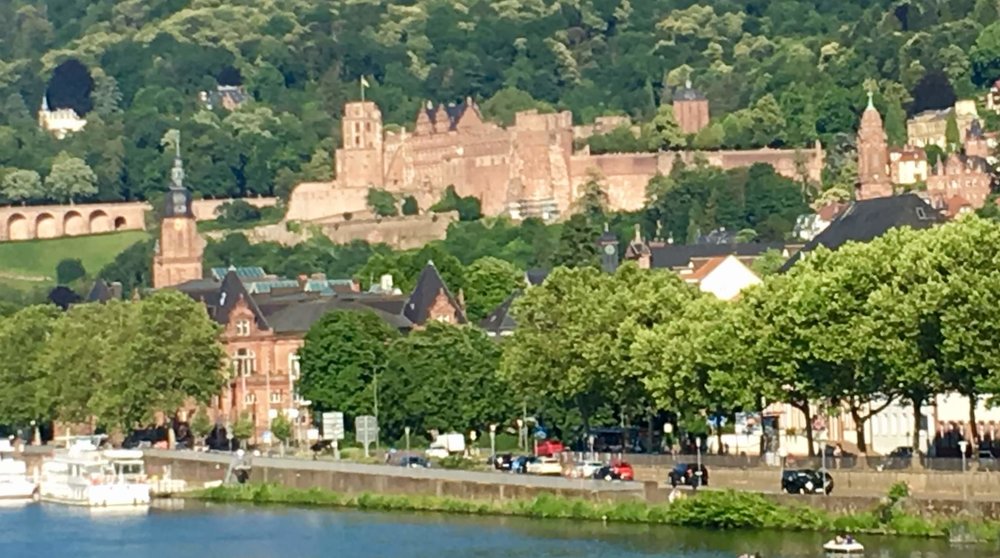
Must see must not
July 8, 2019
Can’t miss out on a must see, especially when it’s sticking out like a sore thumb.
The problem with travel in Europe for me are the cities with “must see” sights that you haven’t seen yet. For a mindless wanderer, a must see creates an obligation, a commitment to accomplish, an achievement requiring plans, knowledge of opening times, tickets, lines, security checks, amidst a sea of selfies, tour group flags – and for reasons that completely escape me – cone-licking tourists in mock poses with a fondness for miniaturizing the particular must see into something that appears to be hand held.
Paris was no longer on that list for me, at least not until recently. I’d already been to the Eiffel Tower, the Louvre, Notre Dame and the sewers. Now, though, even Paris had a “must see” on our last visit – the burnt out cathedral of Notre Dame. And there was no getting around it, either. Literally.
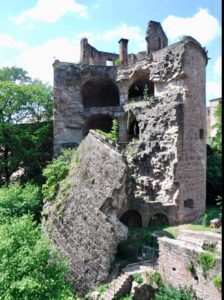
They were actually charging money to see this…
Heidelberg, unfortunately, has a must see: the Schloss Heidelberg. It sits prominently atop the highest of the bluffs surrounding the city, almost daring you not to buy a ticket. You can’t avoid seeing it no matter where you go, and the presence of a funicular even precludes the excuse that there’s too many steps. To top it off, the Schloss is home to what is billed as the largest wine cask in the world. A must see within a must see is a double indemnity against not going to see it.
The one bright spot was that the castle was a ruin. There’d be no opulent inlaid furnishings, gilt-edged mirrors, threadbare tapestries, portraits of the royal inhabitants glorifying their greed, gluttony, lechery and inbreeding. There’d be no damask draperies, period couture or porcelain wash basins, no fine cutlery, bejeweled crowns or silk and linen to remind us all of how the very few lived within eyeshot of their desperately poor and starving subjects. In other words, this would be a ten-minute breeze through with a quick photo op next to the world’s biggest wine cask (me lugging the second largest above my beltline) and we’re out of there and onto a multitude of beer gardens and cafes within the confines of the old city.
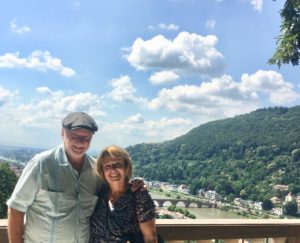
…but this scenery was free . (Carol negotiated with the total strangers for the photo op)
The gardens surrounding the castle did provide some spectacular views of the surrounding hills and river ( I don’t know the name of it; it’s not the Rhine, so who cares?) that bisect Heidelberg. Even with the heat, I managed to comport myself up to the limit of my photographing tolerance. (One failed selfie attempt, two requests from strangers to have our photo taken (Carol handles all the negotiations) and up to four to six landscape shots.) The Schloss staff actually charged to enter the ruins, and I abjured on principle. (If I’m paying, I better see some inlays, damask, porcelain and gilt-edged mirrors, damnit!)
Needless to say, there are no photos of the largest wine cask in the world, so you’ll have to settle for profile shots of myself that Carol took when I wasn’t paying attention.
But the trip to the castle is what led us to discover the vibrant heart of Heidelberg, which we did run the risk of missing. On our first foray into the city, we trammed to what was the main square called Bismarckplatz. It was early Friday evening, and yet it was almost completely deserted, save for the mulling crowds of unsavory types waiting for their bus connection. Not a biergarten in sight. It was appalling for a German town of any size.
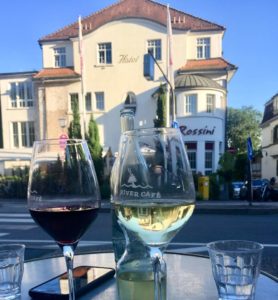
The corner with the cafe, the restaurant and the Irish pub
We started walking, following Carol’s instincts for life on the planet, and…voila…she led us to a corner that featured a cafe bar, an outdoor Italian restaurant and an Irish pub, all across from each other. We hit all three in the course of the evening and floated home with the hope there’d be more corners like this in the days to come,
And there were, thanks to the “must see” of that stupid castle.
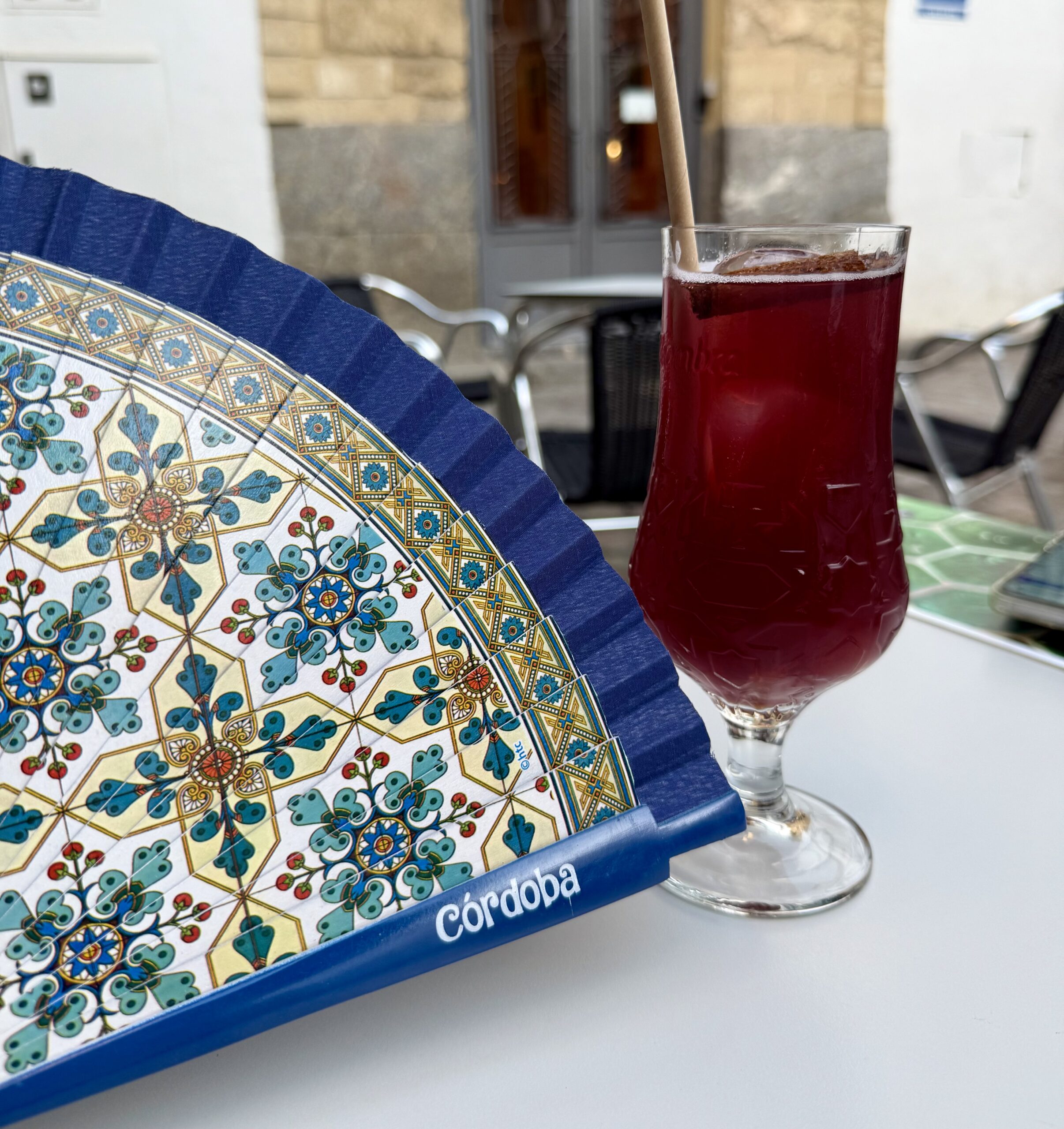
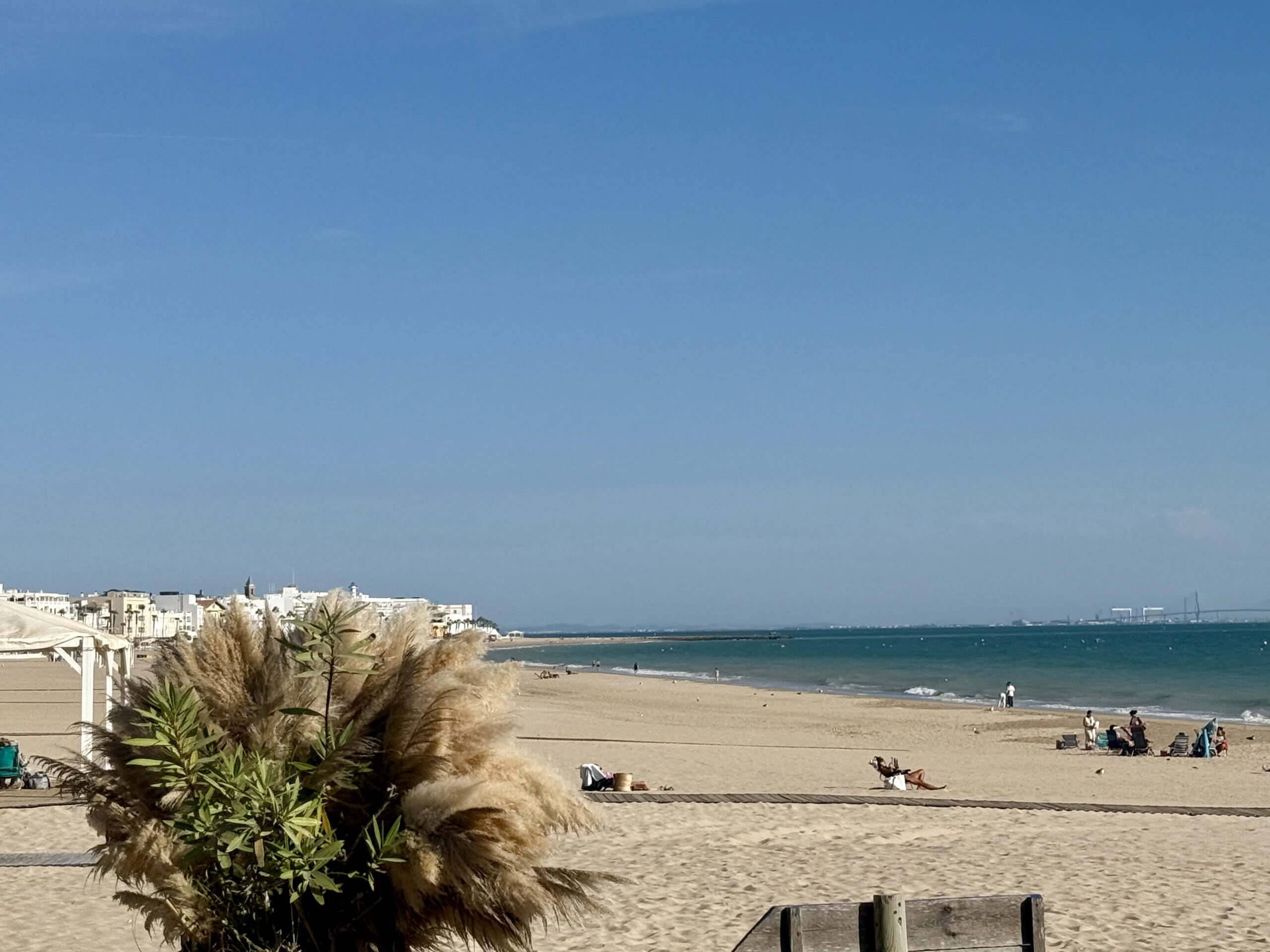

Be the first to comment